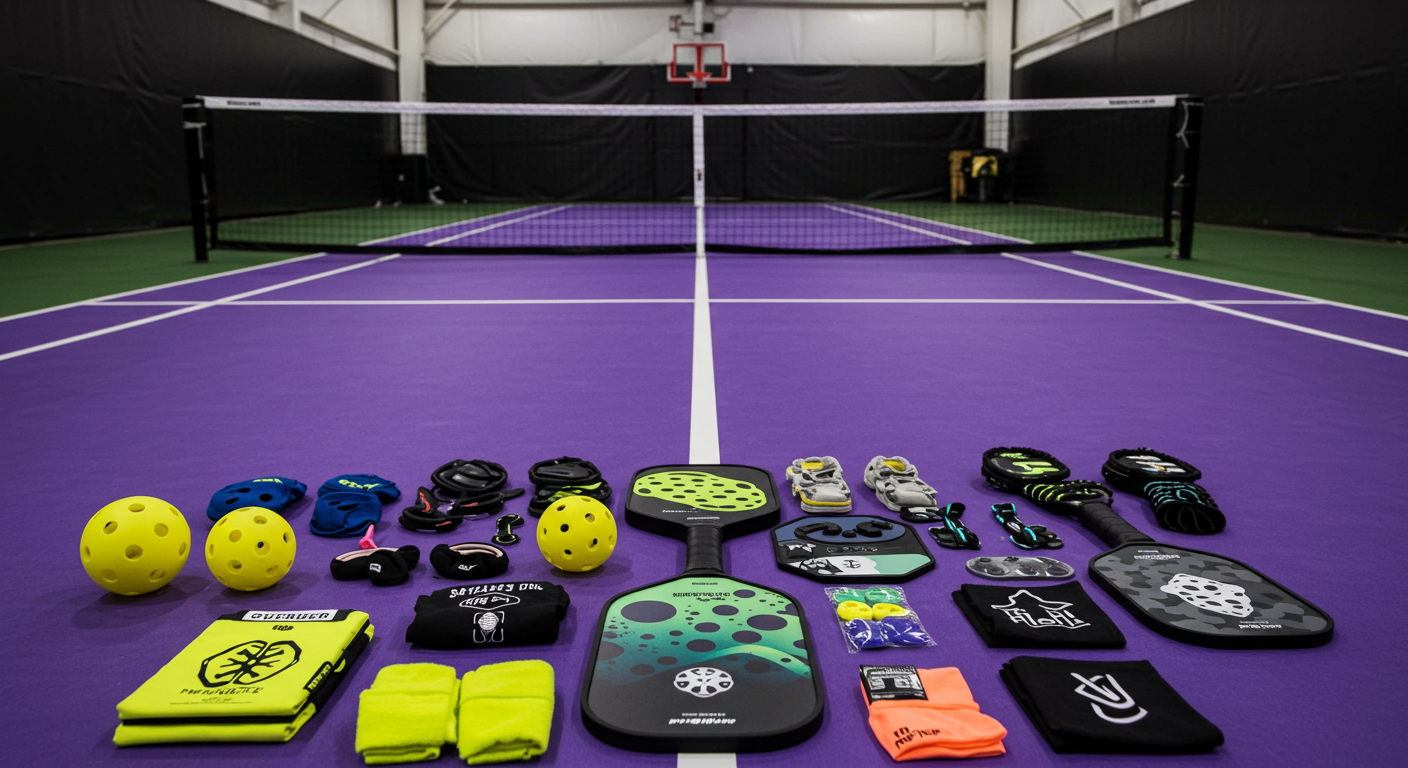Pickleball has taken the world by storm, and whether you’re a seasoned player or just starting out, choosing the right paddle can make all the difference. Among the many options available, two types stand out—graphite and composite paddles. But which one is better? The answer depends on your playing style, skill level, and personal preferences. In this guide, we’ll break down the key differences between graphite and composite pickleball paddles to help you make an informed decision.
Understanding Graphite Pickleball Paddles
Graphite paddles are known for their lightweight and highly responsive nature. These paddles have a core material, usually polymer, Nomex, or aluminum, topped with a thin layer of graphite on the surface. The result is a paddle that offers exceptional control and touch while maintaining durability.
Advantages of Graphite Paddles
- Lightweight and Maneuverable – Graphite paddles are typically lighter than composite paddles, making them ideal for quick reflex shots and precise ball placement.
- Superior Control – The stiff graphite surface enhances touch and responsiveness, making it easier to execute finesse shots, dinks, and volleys.
- Ideal for Competitive Play – Many advanced players prefer graphite paddles because of their combination of speed and accuracy.
Who Should Use Graphite Paddles?
- Players who rely on touch, control, and finesse.
- Those who enjoy a lightweight paddle that allows for quick reactions at the net.
- Individuals looking for a high-performance paddle for tournament play.
Exploring Composite Pickleball Paddles
Composite paddles are constructed with a variety of materials such as fiberglass, carbon fiber, and polymer. They are designed to provide a balanced blend of power and control, making them a versatile choice for many players.
Advantages of Composite Paddles
- More Power and Pop – The fiberglass or carbon fiber face creates a trampoline effect, adding extra power to your shots.
- Better Spin Potential – The textured surface of composite paddles allows for better grip on the ball, making spin shots easier to execute.
- Durable and Long-Lasting – Composite materials are designed to withstand wear and tear, making these paddles a great long-term investment.
Who Should Use Composite Paddles?
- Players who like to generate power in their shots.
- Those who enjoy adding spin to their game.
- Beginners who need a forgiving paddle that provides a mix of control and power.
Key Differences: Graphite vs. Composite Pickleball Paddles
To make your decision easier, let’s compare these paddles side by side.
| Feature | Graphite Paddles | Composite Paddles |
|---|---|---|
| Weight | Lighter (6-8 oz) | Slightly heavier (7-9 oz) |
| Power | Moderate | High |
| Control | Excellent | Good |
| Spin | Moderate | High |
| Durability | High | High |
| Best For | Precision & finesse | Power & spin |
As you can see, the choice largely depends on your play style. If you prioritize control and touch, a graphite paddle might be your best bet. If you prefer power and spin, a composite paddle could be the way to go.
What Do Pickleball Instructors Recommend?
Professional pickleball instructors often suggest trying both paddle types before making a final decision. Many clubs and courts offer demo paddles, allowing players to get a feel for each type. Instructors emphasize that your paddle should complement your playing style rather than dictate it. Beginners may benefit from starting with a composite paddle to get more power behind their shots before transitioning to a graphite paddle as they refine their technique.
Factors to Consider When Choosing Your Paddle
1. Playing Style
- If you enjoy fast, controlled play at the net, graphite paddles are ideal.
- If you rely on powerful groundstrokes and spin, composite paddles will serve you well.
2. Skill Level
- Advanced players often prefer graphite paddles for precision.
- Composite paddles are among the best pickleball paddles for beginners due to their forgiving nature and added power.
3. Weight Preference
- Lighter paddles (graphite) are easier on the arm and offer better maneuverability.
- Heavier paddles (composite) provide more power but may cause fatigue over time.
4. Budget
- Graphite paddles are often slightly more expensive than composite paddles.
- Composite paddles provide excellent performance at a lower price point, making them a great choice for budget-conscious players.
Final Verdict: Which One Should You Choose?
The best pickleball paddle for you depends on your personal preference and playing style. Here’s a quick summary to help you decide:
- Choose a graphite paddle if you want lightweight control, finesse, and precision.
- Choose a composite paddle if you want more power, spin, and versatility.
If you’re still unsure, the best approach is to test both types before purchasing. Many pickleball retailers and clubs offer demo paddles, allowing you to find the perfect fit for your game.
Ready to Elevate Your Game?
No matter which paddle you choose, investing in the right equipment can enhance your pickleball experience. Whether you’re after control, power, or spin, both graphite and composite paddles offer unique advantages. Take your time, try different paddles, and find the one that helps you perform at your best on the court!

